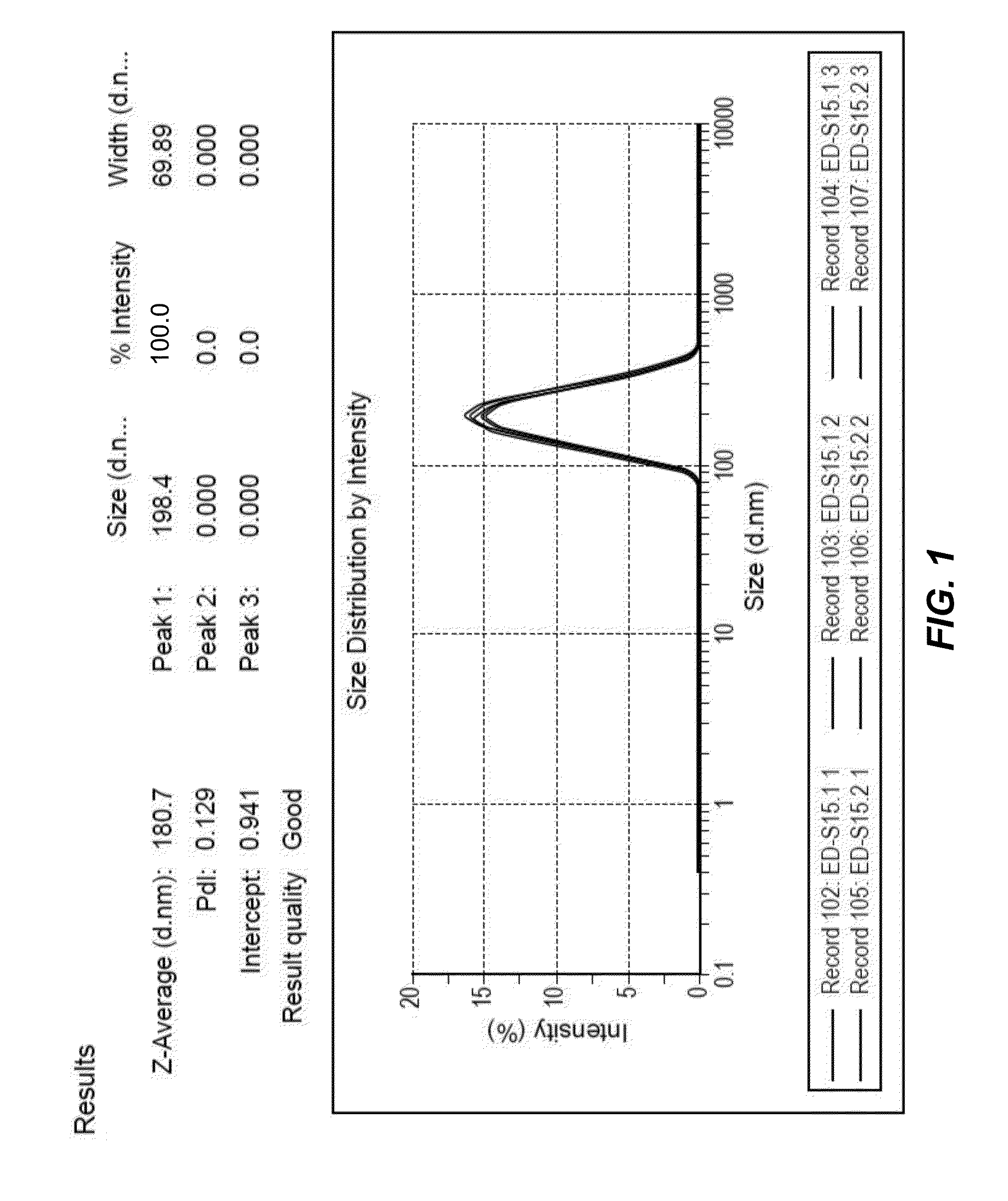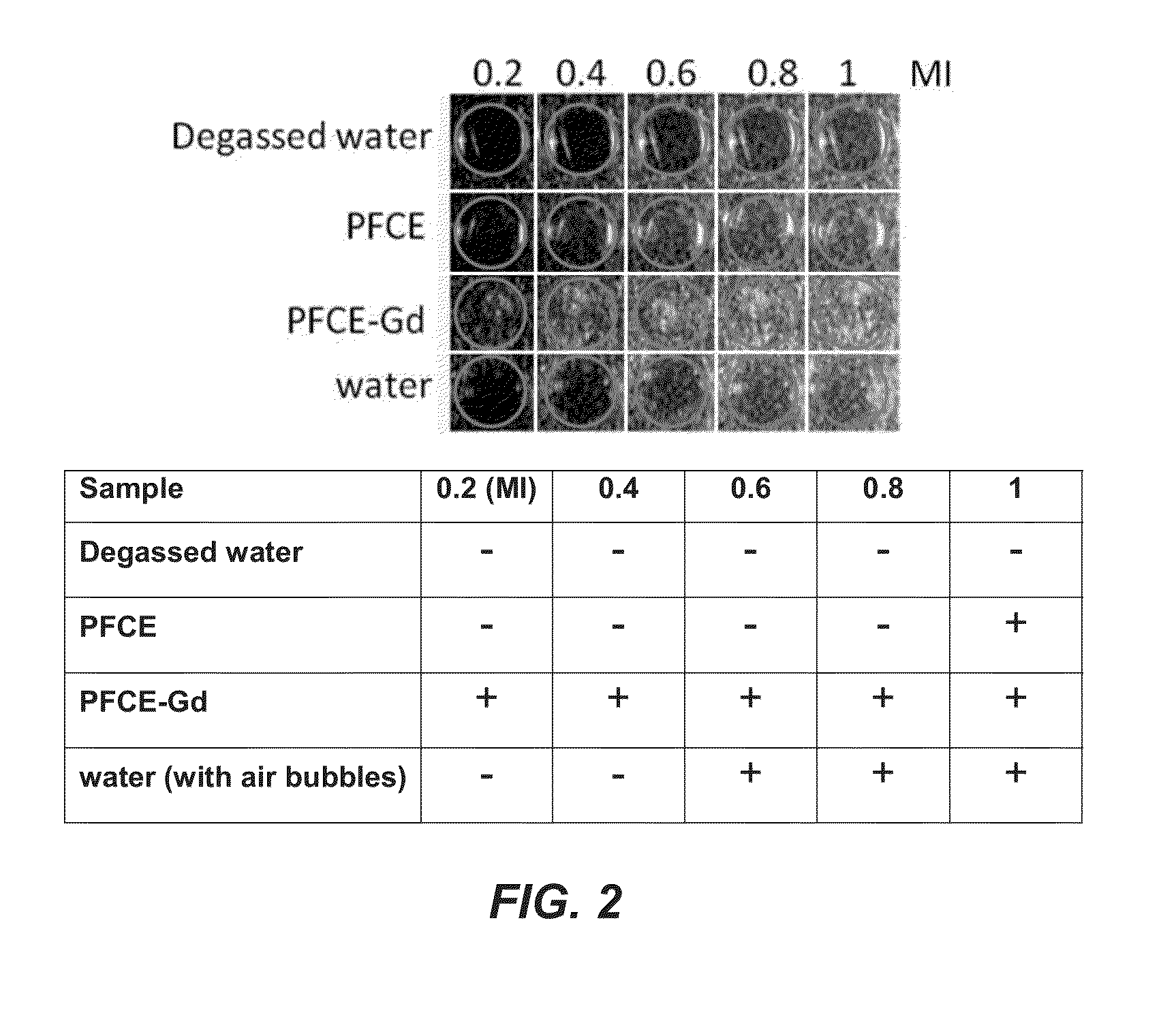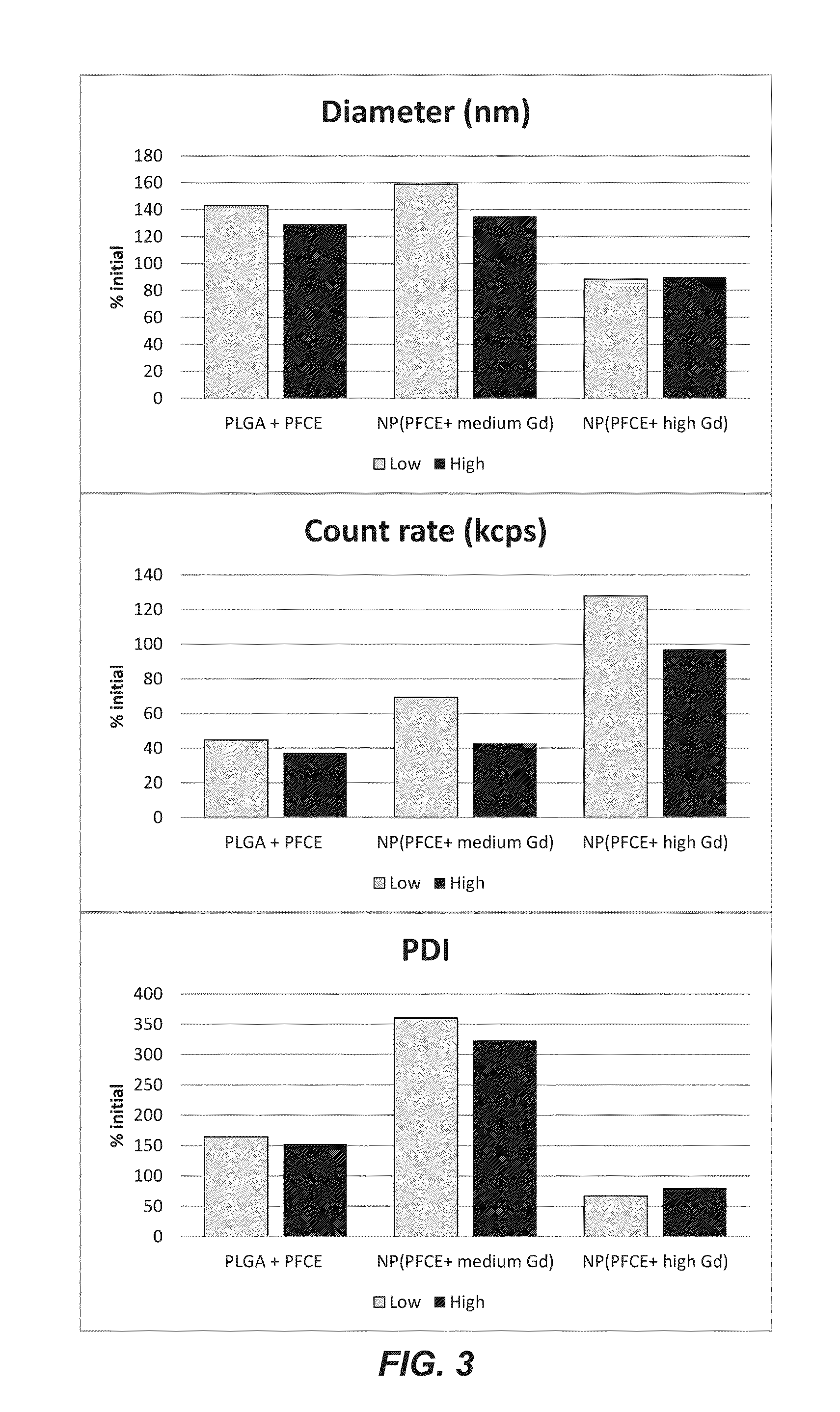Contrast agent and its use for imaging
a contrast agent and imaging technology, applied in the field of contrast agent enhanced medical imaging, can solve the problems of limited ultrasound imaging with respect to imaging depth, insufficient means to monitor cells, limited to target organs, etc., and achieve the effect of greatly improving the visibility of particles in ultrasound and photoacousti
- Summary
- Abstract
- Description
- Claims
- Application Information
AI Technical Summary
Benefits of technology
Problems solved by technology
Method used
Image
Examples
example 1
Preparation of Particles Comprising Perfluoro-15-Crown-5-Ether
[0059]PLGA (0.09 gram) was dissolved in 3 ml dichloromethane in a glass tube. Liquid perfluoro-15-crown-5-ether (890 microliter) was added followed by 50 ml of a solution of Prohance® (a 3 mg / ml solution of gadoteridol) diluted in water. Optionally, additional agents, such as a fluorescent dye, may be added to the fluorocarbon at this stage. If a fluorescent particle was required, 1 mg of IcG or IC-Green (Indocyanine Green, Akorn Pharmaceuticals) was added to the solution.
[0060]As detailed herein below, we prepared particles with a high, medium and low content of Gadolinium. For that purpose, the above mentioned solution of Prohance® in water comprised 11.5, 5.75 and 2.85 ml respectively of Prohance® added up with water to 50 ml of solution. The entire mixture was then added dropwise into 25 ml of a solution of polyvinyl alcohol in water (20 gram / liter) under constant sonication (Branson Digital Sonifier 250; 3 minute cyc...
example 2
Characterisation of Particles
[0061]We found that particles as prepared above were stable for at least a year when kept at −20 degrees Celsius in the dry form. The particles were also stable in solution at working concentrations for at least 3 months at minus 4 degrees Celsius.
[0062]Diameter of particles prepared according to example 1 was determined using dynamic light scattering (DLS) as previously described (Biomaterials. 2010 September; 31(27):7070-7). FIG. 1 shows that the particle size ranged from 80 to 500 nm with a sharp peak at 181 nm. FIG. 1 shows the results of 6 individual and independent syntheses. The results are identical; all curves essentially overlap, indicating a high reproducibility. The particle diameter distribution remained stable for several months. The particles were lyophilised and frozen for storage. However, particles stored as aliquots in water (frozen) were also stable.
[0063]The particles prepared according to example 1 with high and medium gadolinium co...
example 3
Ultrasound Imaging in vitro
[0065]A linear array transducer (L11-3) with central frequency 7.5 MHz was used for all the ultrasound scans (SONOS 7500, Philips Medical Systems, Best, The Netherlands). The MI was variable, from 0.1-2.0, as indicated. Gain was typically set to 90%.
[0066]Gel phantoms consisted of 8% gelatin (Dr. Oetker, Ede, The Netherlands) and 2% agar (Agar Powder CMN, Boom, Meppel, The Netherlands) solution (these gels showed as bright in the ultrasound images).
[0067]Ultrasound exposure was performed at Mechanical Index (MI) ranging from 0.2 to 1. MI is a safety metric indicating how much energy is transferred to the subject or sample during imaging; clinical limits are 1.9 for diagnostic imaging and 1.0 for obstetric scans).
PUM
 Login to View More
Login to View More Abstract
Description
Claims
Application Information
 Login to View More
Login to View More - R&D
- Intellectual Property
- Life Sciences
- Materials
- Tech Scout
- Unparalleled Data Quality
- Higher Quality Content
- 60% Fewer Hallucinations
Browse by: Latest US Patents, China's latest patents, Technical Efficacy Thesaurus, Application Domain, Technology Topic, Popular Technical Reports.
© 2025 PatSnap. All rights reserved.Legal|Privacy policy|Modern Slavery Act Transparency Statement|Sitemap|About US| Contact US: help@patsnap.com



